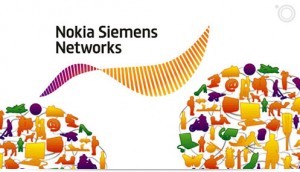 Nokia Siemens Networks plans to bring big data analytics to mobile operators, by introducing a new software on Tuesday designed to make information easily accessible across all parts of a carrier organisation, the company said.
Nokia Siemens Networks plans to bring big data analytics to mobile operators, by introducing a new software on Tuesday designed to make information easily accessible across all parts of a carrier organisation, the company said.
NSN will give carriers new ways to view information about their own performance and translate it into action that may improve subscribers’ experiences – or change their rates.
Customer Experience Management on Demand can be deployed in several different ways, including on a public or private cloud, and includes a single portal for all the sets of data it provides, the company said.
CEM essentially brings big data analytics to mobile operators, compiling and presenting information about variables such as coverage and download speed in a context that service providers can understand; dollars and cents.
By drawing a line between the subscriber’s experience and the operator’s business, CEM can make it easier for a carrier to take action that will improve its bottom line or the product it offers, said Araceli Del Rio Sastre, NSN’s head of customer insight and experience marketing.
NSN already has a CEM offering, but CEM on Demand is designed to be easy to use and reach more types of carrier employees.
All the major mobile infrastructure vendors are working on this type of technology, because it can help operators to make better-informed decisions about networks, customer care and even pricing, Yankee Group analyst Sheryl Kingstone said. Using detailed information that traditionally has only been available to engineers, carriers could improve coverage in a given neighbourhood or charge a premium for data use during a peak time of day in a busy area, she said.
Nokia Siemens gave several examples of how CEM on Demand might be used.
If the carrier’s revenue from a particular enterprise customer had fallen in the past month, the manager of that account might use CEM on Demand to discover a connection between that event and declining network performance near that enterprise’s offices, Del Rio Sastre said. Employees might have used less data because they couldn’t get a good signal, which would reduce a bill charged per bit. Recognising that connection, the carrier might look into improving performance in the area, she said.
Data from CEM on Demand may also point to problems with client devices. For example, some small enterprises give their employees BlackBerries but don’t use the BlackBerry email service, Del Rio Sastre said. If the phones are preconfigured to try to find a BlackBerry email server, those attempts could slow down their overall experience. CEM on Demand might show the business side of the carrier a link between these problems, leading to a solution such as offering an appropriately configured device or a promotion for BlackBerry email service.
NSN collects such information in “content packs” that are tuned for certain departments and areas of interest. On Tuesday, it will introduce many new content packs as well as its CEM on Demand portal, a consistent interface for viewing any of those sets of real-time data. The idea is for employees anywhere in a carrier organisation to be able to easily tap into the portal and make some sense of the flood of performance and business information in the company.
CEM on Demand is available immediately as an on-site system, a cloud-based “software as a service” product, a hosted service or a managed service, Del Rio Sastre said. It will be demonstrated at Mobile World Congress in Barcelona later this month. Trials are already under way at carriers in Europe and Asia, according to NSN.
NSN, a carrier infrastructure company formed in 2007 as a joint venture between the German technology conglomerate Siemens and longtime mobile giant Nokia, brings insights from many carriers’ experiences to play in selecting and presenting key performance indicators, Del Rio Sastre said.
“There are many operators who are basically storing everything, and that is not the most efficient approach,” she said. NSN can help its customers store data more selectively and understand the data they do keep, she added.
Though a tool like CEM could help carriers improve subscribers’ mobile experience, the carrier still will need the will and the circumstances to make it happen, Yankee’s Kingstone said.
“Sometimes they could have all the information in their hands, they could even want to fix it, but they don’t have enough spectrum,” Kingstone said. Other factors, such as local approval for cell towers, can also affect whether a carrier can take action, she added.
In addition, privacy issues constantly come into play when service providers try to mine data about individual subscribers’ mobile use in order to hone service plans or coverage, Kingstone said.
Knowing whether customers are getting the kind of service that will keep them happy can help carriers hold on to subscribers, said analyst Chetan Sharma of Chetan Sharma Consulting. Most of the tools to do this up until now have been focused on voice service, but now it’s becoming more important to drill down into mobile data services, he said. Carriers want to build profiles of their subscribers’ mobile Web browsing and other activities as well as the performance of their data networks.
What Nokia Siemens claims to have done probably wasn’t easy. To be effective, CEM systems need to boil down terabytes of data from a wide array of network sensors and other sources, according to Sharma.
NSN announced a major restructuring last year, including divestitures and about 17,000 layoffs. The venture is struggling against lower-priced network equipment from vendors in China, Sharma said. CEM on Demand is an example of the type of advanced offering where NSN doesn’t yet face much competition from those rivals, he said





